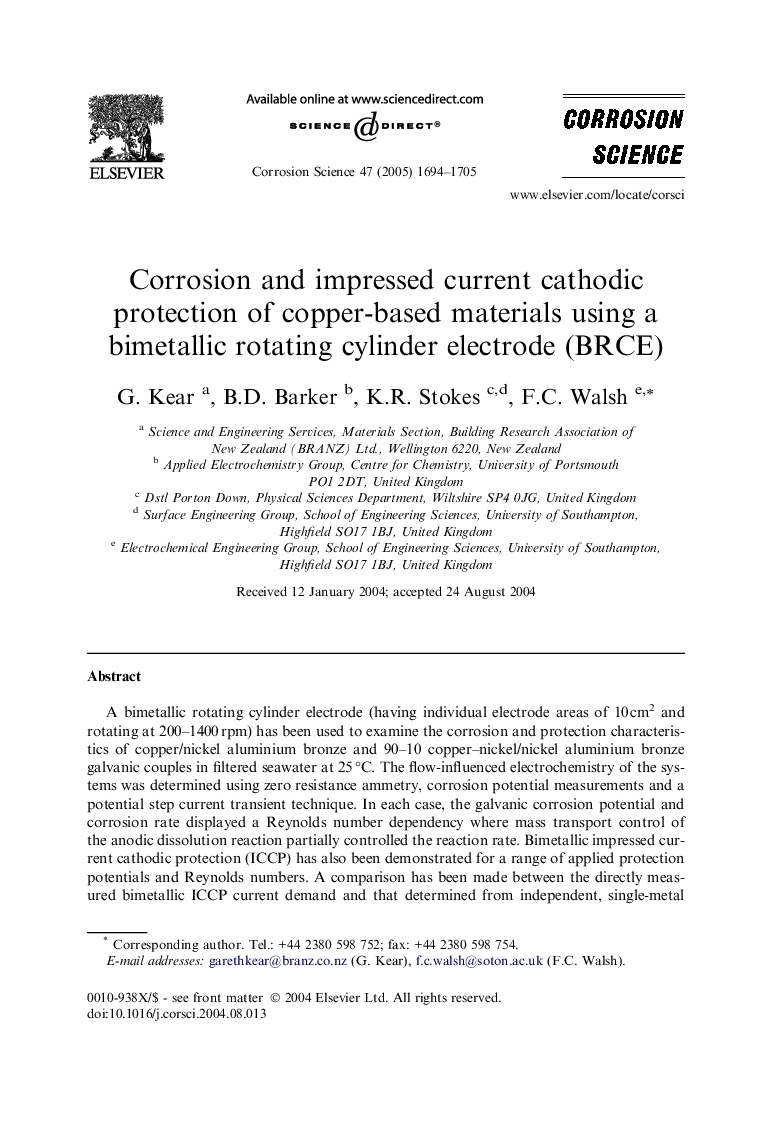| Article ID | Journal | Published Year | Pages | File Type |
|---|---|---|---|---|
| 10628649 | Corrosion Science | 2005 | 12 Pages |
Abstract
A bimetallic rotating cylinder electrode (having individual electrode areas of 10 cm2 and rotating at 200-1400 rpm) has been used to examine the corrosion and protection characteristics of copper/nickel aluminium bronze and 90-10 copper-nickel/nickel aluminium bronze galvanic couples in filtered seawater at 25 °C. The flow-influenced electrochemistry of the systems was determined using zero resistance ammetry, corrosion potential measurements and a potential step current transient technique. In each case, the galvanic corrosion potential and corrosion rate displayed a Reynolds number dependency where mass transport control of the anodic dissolution reaction partially controlled the reaction rate. Bimetallic impressed current cathodic protection (ICCP) has also been demonstrated for a range of applied protection potentials and Reynolds numbers. A comparison has been made between the directly measured bimetallic ICCP current demand and that determined from independent, single-metal rotating cylinder electrode measurements. In this case, the mixed charge and mass transport controlled rate of oxygen reduction was examined.
Related Topics
Physical Sciences and Engineering
Materials Science
Ceramics and Composites
Authors
G. Kear, B.D. Barker, K.R. Stokes, F.C. Walsh,
